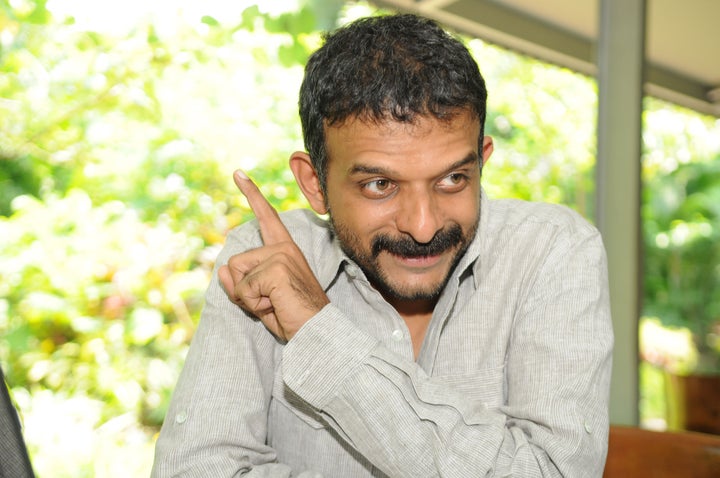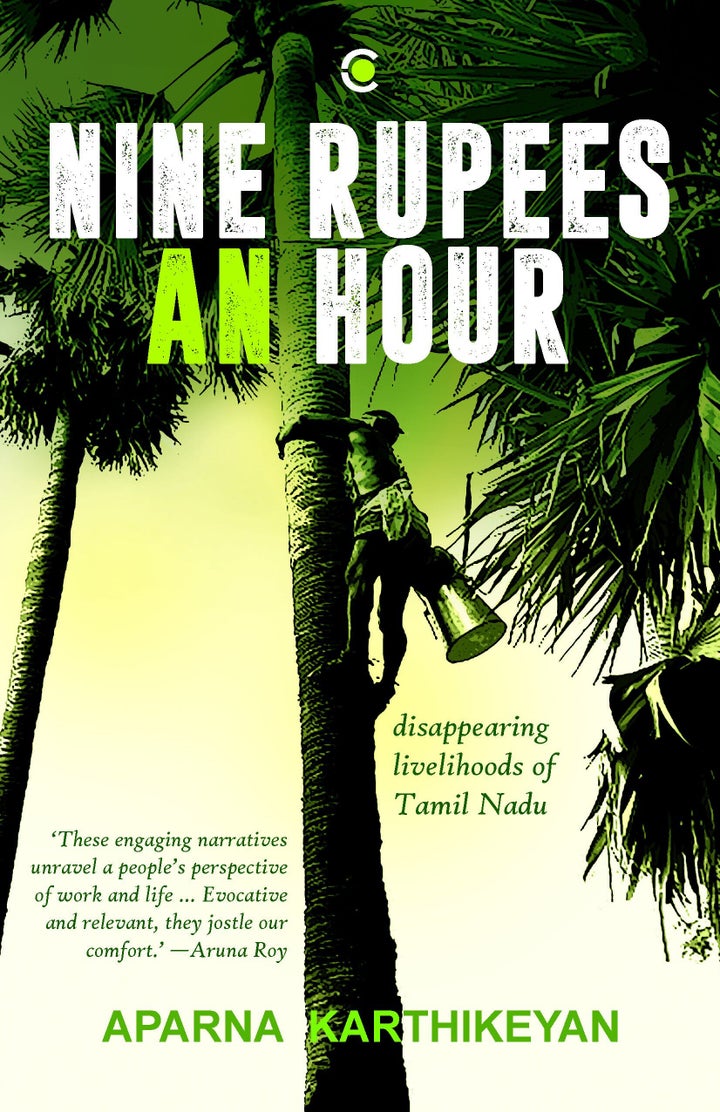
This is an interview with Carnatic singer TM Krishna which appears in Nine Rupees An Hour: Disappearing Livelihoods of Tamil Nadu.
Communities kept art forms alive, sometimes forcing it on the next generation. For the same reason, lots of artists have been stigmatised because their art ‘outs’ their community or caste group. To avoid caste oppression, the practitioners,— particularly their children—move away from the art. What can be done to keep those art forms alive outside of the casteist silos? Are there any successful examples?
This usually happens with caste groups that fall in the lower rung of the hierarchy. Most art forms in India are largely caste-specific with minimum expandable bandwidth. Across the country, caste is our marker, like ethnicity might be a marker in, say, Poland or other parts of Europe.
The answer probably does not lie with the art but with caste. Unless you engage robustly with the caste issue, you’re going to have this problem. You can have artistic engagements and conversations within each artist community, which essentially means within a caste group. But we also need artistic conversations to transcend these limits. And they are not easy or simple. One has to be very careful that there is no question of appropriation or condescension.
The other question is: How do we create an environment where you empower the community to feel proud of their art and culture? In my book Reshaping Art, I talk about the idea of identity and its inversion. That is, when you talk about the upper spectrum of the caste group and culture, identity needs to be collapsed. When you look at the lower spectrum of society, caste identity needs to be enabled and invigorated. An Arundhatiyar must own their identity and say, ‘This is my beautiful music.’ Then, the musician within the Arundhatiyar community will be respected. In turn, the community will also realise their cultural expanse.
For the latest news and more, follow HuffPost India on Twitter, Facebook, and subscribe to our newsletter.
The issue with art forms that fall in the subaltern—and I don’t have clarity on this since it’s so complicated—is that, at one level, we need the art form to permeate and grow, but, on another level, you also wonder what happens to the community that held the art form. It’s what happened to the Devadasis—their art was appropriated.
That’s why I think empowering the community that already holds the art form is a starting point. No Dalit community is told that their cuisine is great, their dance is great, their music is great; that they are central to Indian culture. Can we get there?
The changing political and social climate is disrupting a lot of art forms. Kaniyan kuttu is badly affected by Sanskritisation of worship; bharatanatyam, after it moved into the hands of the upper caste, became a pay-to-dance-in-the-sabha thing; folk dances like poikkal kuthirai are marginalised by the advent of cinema sub-culture, among other things. Again, what’s the fix for this?
Everything is going to be appropriated by mass culture. If you belong to the top caste spectrum, you’ll proudly say, ‘Look, they took this from me. Carnatic music comes in the movies.’ The stand-up comic Alexander Babu said something very relevant in this context. He talks about a boy asking a maama in a sabha, ‘Isn’t this what Rahman put in his song?’ The maama says, ‘Yes da, you think they’ll give him Oscar for nothing?’ That’s a fascinating sociological statement. What they are saying is: Look, Rahman needs Naatakurinji raagam.
But, as you go down the hierarchy, it becomes more difficult because you don’t have the power to contest appropriation. And before we realise it, mass culture twists and morphs the actual practice. Gaana is subaltern fusion music that evolved in the city of Chennai; it’s a new culture, about a hundred years old. This art form has Urdu, English, Telugu, Tamil, and was originally part of funeral music. It is the voice of Dalits, manual scavengers and daily wage labourers. The lyrics traversed everything—politics, social moorings, ethics, morality, sexuality, conflict, oppression, protest and hope. Then, gaana moved from being sung at funerals to becoming an entertainment by itself. In cinema now, the item number is a gaana song. It has vulgarised the form as just a song for gyrating dance. Now, what songs do people want to hear? The gaana that is in cinema.
We need to accept that we cannot compete with mass culture, but we can make sure other narratives are powerful, alive, vibrant and engaged. How do you do this? One way is by giving local panchayats grants to sustain art and culture, particularly art that belongs to their localities. Here, you must have some cultural body in every panchayat. It shouldn’t just be about music; it could be about painting, dance, craft, etc. Then, creation of local art spaces takes place.
Even if you want to look at it from the tourism perspective, the possibilities are phenomenal. Every panchayat becomes a place for people to see art, culture, music and dance. It’ll take you ten years to put this in place and will need more than just money and space. We need to instill pride in the local, distinct and unique subcultures. Heterogeneousness must be normalised, and sharing should be the basis of this new cultural initiative.
Folk artists often say that their art forms receive stepmotherly treatment. They are not given the space—culturally and socially—to perform, in the way that classical artists do. And monetarily, there is no comparison. Can this gap ever be bridged? And why is it important to do so?
Can the gap ever be bridged? I would like to say yes, but I really don’t know. The problem comes from what we value and want to project as valuable art and culture. Unfortunately, the culturally and economically privileged do not see folk artists as sophisticated or evolved. This unquestioned, discriminatory aesthetic practice is rampant, even among the so-called progressives. And those from oppressed communities who want acceptance among the cultural elite slowly give up or hide their own cultural markers in order to fit into the upper-cultural aesthetic space. Unless we address these anomalies, I am not sure how we can reach any sort of economic or social parity. The words folk and classical need to be entirely demolished.
A private sector bank will be happy to sponsor a Carnatic concert in Chennai. You know why? One, the bank knows that it caters to the middle and upper middle class who have money and many of whom are its customers. They’ll take a hundred tickets for privileged customers, and they’ll sell the rest. Two, they see being associated with Carnatic music as high culture. Suppose we say, instead, let’s have kuttu, they are not going to support it. Even the treatment, hospitality and honorarium given to a classical musician and a folk musician are disparate. It’s a complex battle.
In Reshaping Art, you speak of art as a necessity or luxury. How does one explain the need for art—as we know it and consume it—to someone who walks seven kilometres for water? How do they respond and react to art? Is art for them also a leisurely pursuit?
Are we presuming that the person who walks seven kilometres for water does not sing? Or does not know dance? Painting on the walls of homes, the red and yellow lines in the door corners, and kolams, all that is art. So, every individual knows art, it is natural. They may not intellectualise it or even call it art, but they just “do”. The question of it being a necessity or not is irrelevant; it is life. It is people like you and me who decide that art is not needed for the poor; that sanitation, education and healthcare are priority. But how can any of this be offered if we do not enter the cultural spaces of their homes? Because within that home resides art.
I meant art as a leisurely pursuit, in the sense that we take time off from our daily life to consume art.
This argument is similar to how we have explained intellectual evolution. We moved from being hunter-gatherers to becoming agriculturalists. Once we did not have to travel so much to get food, our physical efforts reduced and we had time to do other things. This is the standard accepted model of how the mind developed. Many arguments on intellectuality come from this very unfortunate hierarchy. Like the often-stated point that only those who have leisure have time for philosophical or artistic pursuits. But others too, spend time on art. They go to village festivals, listen to kuttu songs and watch movies. So, everybody is engaging with some form of art in their lives.
Don’t forget that people paint a mud pot before they use it. Why? Won’t rice cook otherwise? They do it because there’s an eye for the idea of aesthetic. And it naturally exists in every culture across the globe. The idea of aesthetics and beauty, however culture-specific it may be, has always been part of every livelihood engagement and it’s not linked to wealth. We link it to wealth only because we want to be highbrow about thought and culture. We are propagating a fraud. Therefore, we ask, why do the poor need art when they don’t even have time for food? But you can’t deny anybody access to art and culture in the name of poverty. One is to deny someone access. Another is to ignore the culture that exists within them. We do both. And then when their art and culture is dying, we say, ‘Oh no, let’s archive it.’
I think leisure itself is an interesting idea. Leisure cannot be associated only with extra available time. It’s a state of mind. You could have six free hours, and still not have leisure. When the person working eight hours a day breaks into song, how does that happen? The whole idea of physical work is quite fascinating. We—the upper castes and classes—have no clue about it. For generations, we got other people to do our work. What happens in the mind when you’re engaging with physical labour is the question we should be asking.
I think physical labour is actually a trigger for art. Why did the fisherfolk sing? It was a way of changing physical hardship into a song. But they didn’t sing about physical hardship. They sang about the sky and the water, converting what could be painful into a celebration. Though they were at sea for seven hours to catch fish, they were smelling the air, celebrating the water, looking at the birds. They know everything about the shift of the wind, not just occupationally, but as people that are connected to the environment.
I think the problem here is intellectual elitism, of the idea of the intellect itself. The intellectual endeavour of art has been linked to its articulation. Intellectual endeavour of the art is about being within it. That is why subaltern cultures paint, sculpt, sing and dance. This is their pain and their celebration, and is what keeps them connected to all that surrounds them. And only leisure can produce it. This is true leisure, and this is found within, in the emotions and the experience, not in spare time.

Excerpted with permission from Nine Rupees An Hour: Disappearing Livelihoods of Tamil Nadu, Aparna Karthikeyan, Context.